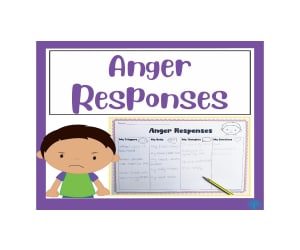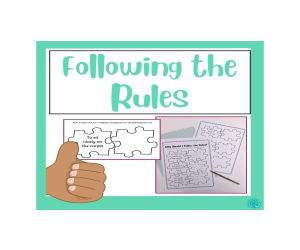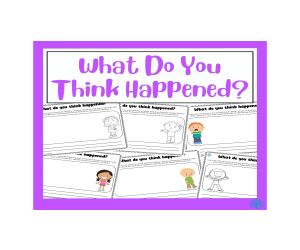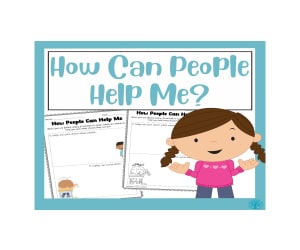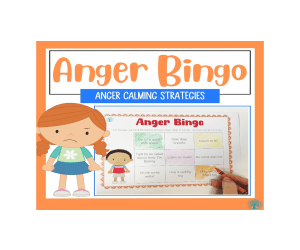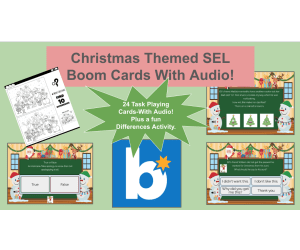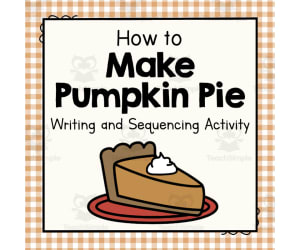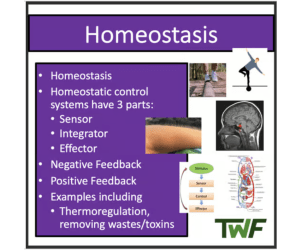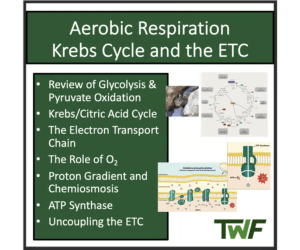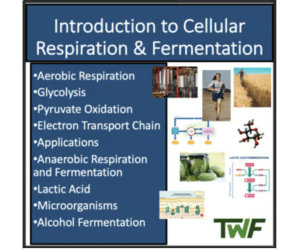6,324 products added recently
Page 531 - Newest Teaching Resources
Responses to Anger Worksheet
Special Resources, Social Skills, Social Emotional Learning (SEL), Special Education Needs (SEN), Not Grade Specific, Worksheets, Worksheets & Printables
Handling anger constructively is an essential emotional intelligence skill. This insightful worksheet strengthens abilities to manage frustration by analyzing personalized anger triggers and typical reactions when seeing red. Featuring sections on triggers, physical cues, thought patterns, accompanying emotions beyond mad, and common rage responses and calming strategies, it cultivates self-awareness around outbursts. The worksheet prompts children to engage in a reflective process, encouraging them to identify their unique anger triggers. By recognizing these triggers, children gain insight into the specific situations or circumstances that evoke their emotional responses, paving the way for a more informed understanding of their own emotional landscape. In addition to pinpointing triggers, the worksheet invites children to consider the physical manifestations of anger. This aspect promotes a mind-body connection, helping children become attuned to the bodily sensations associated with their emotions. Through this awareness, they can develop strategies for managing and coping with the physical aspects of anger. Assessment tools aid in discerning destructive versus healthy outlets when emotions boil over. Teachers can incorporate it alongside lessons on empathy, respect or conflict resolution. Counselors may utilize it in sessions exploring temper issues. Parents can discuss it at home when tensions escalate. In essence, the Responses to Anger Worksheet serves as a valuable companion for educators, parents, or caregivers seeking to nurture emotional intelligence in children. By fostering self-awareness and providing a structured framework for reflection, this resource empowers children to navigate and understand their responses to anger in a constructive and informed manner.
Author SEN Resource Source
Tags Anger, Anger Management, Behavior Support, Aggression, Self-regulation, Impulse Control, Coping Skills, Social-emotional Learning, Counseling Worksheets
Following the Rules Worksheet
Special Resources, Social Skills, Special Education Needs (SEN), Not Grade Specific, Worksheets & Printables, Worksheets
Following rules facilitates learning and safety in the classroom. This thought-provoking worksheet helps children understand why rules exist and reflect on the impacts of breaking them. With prompts structured around key concepts like respect, responsibility, and consequences, students gain appreciation for protocols designed to help everyone thrive. The worksheet shows a variety of classroom rules and children are to think of what the consequence would be if that rule was not followed. Children can consider outcomes like distracted classmates, overwhelmed teachers, and disrupted learning. This worksheet can start a discussion that encourages chidlren to recognize how by following the rules we create environments where all feel valued. The worksheet aims to build intrinsic motivation for following protocols by making consequences tangible. Rather than mandating rigid compliance, it spurs self-direction through logical outcomes. Teachers can use it to introduce expectations or respond to misbehaviors. Counselors may incorporate it into problem-solving training or sessions about responsibility. Asking children to assess rules cultivates maturity beyond blind compliance. This reflective critical thinking activity positions protocols not as punishments limiting freedom, but as tools empowering students for success. Examining the rationale behind rules inspires intrinsic motivation and principled perspectives in kids. This quick yet insightful writing task helps kids gain deeper respect for classroom rules meant to benefit everyone. This resource includes 2 pdf worksheets
Author SEN Resource Source
Tags Following Rules, Classroom Rules, School Rules, Appropriate Behavior, Good Behavior, Social Skills, Responsibility
What Do You Think Happened Emotions Worksheets
Special Resources, Social Emotional Learning (SEL), Social Skills, Not Grade Specific, Worksheets, Worksheets & Printables
Understanding emotions is an integral part of social-emotional intelligence. This unique worksheet set helps children read facial expressions and situational cues to infer feelings. Featuring 18 worksheets showing children with varied happy, sad, angry, fearful, disgusted, surprised, embarrassed, proud, and calm moods, the sheets prompt creative empathy and emotional literacy. Each page displays a child reacting to an event with an emotion. Children need to look at the emotion and decide what may have led to someone feeling this way for example reacting to a spilled ice cream cone, hiding a broken vase, receiving an award or struggling with schoolwork, etc. Children are to draw in the box what they think may have led to someone feeling this way. These engaging worksheets build skills in emotions identification, perspective-taking, and situational analysis. Counselors can incorporate them into social skills training or self-awareness lessons. Teachers may use them for class discussions during social-emotional learning. Parents can try them at home to nurture empathy about life’s ups and downs. This worksheet set offers diverse starting points to explore the richness behind emotions and cultivate compassion. Included in this resource are 9 color versions and 9 black and white versions that allow children to color in their own interpretations.
Author SEN Resource Source
Tags Emotions, Feelings, Social-emotional Learning, Emotional Intelligence, Social Skills, Special Education, Mental Health, Reflection
How Smiling Makes You Happy Worksheet
Special Resources, Social Emotional Learning (SEL), Special Education Needs (SEN), Not Grade Specific, Worksheets & Printables, Worksheets
Cultivating positivity is a valuable skill for wellbeing. This unique social-emotional learning worksheet explores the science behind how our expressions impact emotions. With engaging activities, kids discover how the simple act of smiling releases feel-good chemicals to boost happiness. The resource explains how stretching facial muscles triggers biochemical reactions that lighten moods. Uplifting prompts then encourage students to brainstorm silly or amusing things that make them grin. The simple versatile nature of this worksheet means it can be appropriate for children of most ages. Younger children can draw funny or silly made up scenarios. Older kids may list comedy shows, jokes, or memories that never fail to tickle their funny bone. Besides a fascinating science lesson, the worksheet strengthens emotional regulation habits. Teachers can use it for lessons on resilience during stressful times. Counselors may incorporate it into sessions on releasing tension or anxiety. Parents can try it at home on grumpy mornings to turn frowns upside down. The versatile format makes practicing positivity and understanding mind-body connections approachable for children of all ages. Instead of remaining trapped in negative thought cycles, kids gain skills to shift perspectives. Children can discover some simple, healthy coping strategies just by tweaking their expressions. This resource includes 1 PDF worksheet
Author SEN Resource Source
Tags Happiness, Positivity, Improving Mood, Emotional Health, Mental Health, SEL, Emotional Regulation, Mindfulness, Counseling
How People Can help Me Calm Down Worksheet
Special Resources, Social Emotional Learning (SEL), Social Skills, Special Education Needs (SEN), Not Grade Specific, Activities
Learning to manage big feelings is an essential skill for life. This unique worksheet helps identify what children need from others when emotions feel out-of-control. Featuring two columns - “Things That Help Me” and “Things That Make It Worse” - children reflect on positive and negative support strategies. Childdren can write or draw their preferred calming techniques like deep breathing together, having time to cry or listening without judgment. The second column is for inputting well-intended but ineffective tactics that inadvertently escalate situations, this will be very personal to an individual child and it will be give them the chance to reflect on what really works for them in times of heightened emotions. The worksheet builds self-awareness around triggers and fosters communication skills to ask for specific help. Teachers can incorporate it into social-emotional learning. Counselors may use it for sessions on anger management. Parents can fill it out with children to be ready for when tensions run high. Instead of shame for losing control, kids gain agency over outbursts, try out new coping strategies, and rebuild strained relationships. Completed worksheets will then become handy guides for peers and adults on compassionate responses. Simple yet incredibly impactful for mental health, this worksheet transforms insight into action plans for remaining calm. Students of all ages become empowered asking for the precise support they require when distressed. This resource includes 2 version of the same PDF worksheet - one in color and one in black and white
Author SEN Resource Source
Tags Calming Strategies, Soothing Techniques, Anger Management, Emotion Regulation, Social-emotional Learning, Mental Health, Calm Down Strategies, Self Awareness, Self Regulation, Behavior Support
Weekly Emotions Tracker
Special Resources, Social Emotional Learning (SEL), Not Grade Specific, Activities
Developing emotional awareness is a pivotal skill for mental and social wellbeing. This useful printable facilitates daily check-ins for kids to document feelings in a simple, visual way. Using color-coded emoji faces, students draw and color the face that represents their predominant emotions each day for the morning, afternoon and evening. The tracker includes 5 options of emotions to choose from; yellow face for happy, green face for calm, orange face for worried, blue face for sad and red face for angry. Each day children draw the appropriate color face for how they were feeling during in each section of the day. Not only does the act of checking in cultivate self-awareness, but the tracker sheets become personalized records of emotional patterns, triggers, and growth over time. Teachers, counselors and parents may use it to spot difficult days needing extra support. The simple format makes reflecting on feelings an approachable, consistent ritual for children and teens. Instead of bottling up big emotions, chidren have an outlet and vocabulary for inner experiences. Plus, noting trends helps anticipate and mitigate future triggers proactively. Simple yet powerful, this weekly emotions tracker worksheet promotes emotional intelligence. By dedicating time for feeling identification, students gain essential skills for self-care and relationship building. Included in this resource is 1 page of PDF
Author SEN Resource Source
Tags Emotions Tracker, Emotions, Feelings , Social-emotional Learning, SEL, Emotional Intelligence, Self-awareness, Mental Health, Mindfulness, Self-reflection
My Week's Peaks and Troughs
Special Resources, Social Emotional Learning (SEL), Social Skills, Special Education Needs (SEN), Not Grade Specific, Worksheets & Printables, Worksheets
Reflecting on one’s ups and downs is an integral part of building emotional intelligence. This worksheet provides a framework for children to highlight their weekly wins and challenges in a structured, visual way. With opportunities for self-expression, it facilitates personal growth through reflection. The resource features two sections titled “My Peaks” and “My Troughs” each with plenty of space for writing or drawing about their experiences through the week. Children can capture their broad experiences, both highs like accomplishing a goal or enjoying time with friends and lows like struggling with schoolwork or having an argument. The Peaks and Troughs worksheet helps children process situations constructively without judgment by focusing on learnings. Teachers can incorporate it into Friday wrap-ups to foster class community and resilience. Counsellors may utilize it to identify mood patterns and tools for self-care. Parents can try it at home to nurture meaningful conversations around growth. The flexible format makes check-ins feel safe for children of all ages, children gain skills in self-awareness and reflection. Plus, the worksheet becomes a personal journal showing emotional progress. This simple yet versatile tool turns reflection into routine for mental wellbeing. Children emerge better equipped to ride out life’s crests and swells.
Author SEN Resource Source
Tags Self-awareness, Mindfulness, Reflection, Emotions, Feelings, Social-emotional Learning, SEL, Emotional Intelligence, Emotional Regulation, Coping Skills
Describing My Emotions
Special Resources, Social Emotional Learning (SEL), Not Grade Specific, Worksheets & Printables, Worksheets
Understanding emotions is a pivotal social-emotional skill for children to develop. This set of four worksheets helps students identify and process their feelings in a structured, reflective way. With 4 different worksheets for happy, sad, angry, and worried, children can build their emotional intelligence through self-expression. Each sheet features a basic layout with a single feeling word at the top and then spaces to reflect on a time that they felt that emotion, how it felt to feel that emotion, how it affected their behavior and what coping strategies they used. They’ll learn to label complex feelings, analyze responses, and find healthy outlets. These worksheets facilitate personal breakthroughs around emotions. Teachers can incorporate them into social-emotional check-ins during morning work. Counselors may have students complete them individually or in groups to spur discussions. Parents can try them at home to nurture more meaningful conversations. No matter the environment, the flexible format makes reflecting on emotions approachable and rewarding for kids. Instead of acting out, children feel heard and cared for. The sheets become personalized journals charting self-awareness and growth over time. This simple yet versatile toolkit turns emotional learning into routine. Suitable for young students through teens, it provides a constructive framework for navigating life’s ups and downs. Included in this resource is 4 pages of pdf
Author SEN Resource Source
Tags Emotions, Feelings, Social-emotional Learning, SEL, Emotional Intelligence, Emotional Management, Self-regulation, Behavior Management, Mindfulness, Reflection
My Emotions This Week Worksheet
Special Resources, Social Emotional Learning (SEL), Not Grade Specific, Worksheets, Worksheets & Printables
Understanding emotions is an essential social-emotional skill for children to build. This worksheet helps students identify and process their feelings in a structured, visual way with opportunities for self-expression, it’s an engaging tool for emotional learning. The resource features four sections titled “I felt happy when...”, “I felt sad when...”, “I felt angry when...” and “I felt worried when...” With plenty of space to write or draw, children capture their emotional experiences over the week. They may depict playing with friends, arguing with siblings, struggling with schoolwork, worrying about an upcoming test, feeling proud of an accomplishment, and more. The worksheet facilitates children in labeling complex emotions, reflecting on responses, and finding healthy outlets. Teachers can incorporate it into morning work to gauge students’ states of mind or at the end of the day as a way to reflect. Counselors may utilize it for identifying mood patterns or behavioral triggers. Parents can try it at home to spark conversations around difficult feelings. No matter the environment, the flexible format makes emotional check-ins approachable for kids. Instead of being scolded for age-appropriate outbursts, they can feel heard. Children gain skills in situational awareness, causal relationships, and self-regulation. Plus, the sheet becomes a personalized journal of emotional growth to look back on. This simple yet powerful tool turns reflection into a routine exercise for mental wellbeing. Suitable for young students through teens, it provides a constructive framework for navigating life’s ups and downs. Included is 1 PDF worksheet
Author SEN Resource Source
Tags Emotions, Social Emotional Learning, Feelings, Emotional Intelligence, Self Awareness, Self Regulation, Counseling, Mindfulness
Anger and Calming Strategies Bingo Board
Special Resources, Social Emotional Learning (SEL), Special Education Needs (SEN), Social Skills, Not Grade Specific, Activities
Managing anger can be challenging for children. This bingo game provides a unique and engaging approach for teaching calming strategies to help children handle frustrating emotions. The set includes 3 different bingo boards each with 9 squares. Each square features a different calming technique like deep breathing, listening to music or going to a safe space. Children can use the blank board to fill in their own ideas or user the suggested strategies. Playing is simple - when feelings of anger arise, children use one of the calming methods and then mark off the matching square on their board. The goal is to complete rows horizontally, vertically, or diagonally, just like regular bingo. Not only does this provide motivation to try different strategies, but also gives a sense of accomplishment. Anger Bingo transforms a classic game into a tool for building emotional intelligence. It’s an excellent way to introduce anger management skills or reinforce concepts learned. Children feel empowered taking an active role to soothe themselves. Plus, by completing the boards, they’ll discover new coping methods tailored to their needs. This versatile resource works for individual and group settings with children of varying ages and abilities. Included in this resource are 3 PDF bingo boards. One in color, one in black and white and one blank one for children to fill in their own preferred strategies.
Author SEN Resource Source
Tags Anger, Behavior Support, Calming Strategies, SEN, Bingo
Anger Dos and Don't Worksheet
Special Resources, Social Emotional Learning (SEL), Special Education Needs (SEN), Social Skills, Not Grade Specific, Worksheets & Printables, Worksheets
Anger is a normal human emotion, but how we express it makes all the difference. This useful worksheet helps children process feelings of frustration in healthy ways. By identifying positive and negative behaviors, chidlren learn to manage anger and avoid escalating situations. The resource features a simple, layout with designated sections to list “Anger Dos” and “Anger Don’ts." Under Dos, children can be prompted to write constructive, calming strategies like “take deep breaths” and “talk to a friend”. The Don’ts section is for recognizing unhealthy responses like “yelling” or “throwing things.” Mapping out appropriate emotional responses promotes self-awareness and wise decision-making. Children feel empowered, not ashamed, of their anger and can reference the worksheet as needed when those strong feelings emerge. The open-ended components allow students to get creative and self-reflect on coping strategies tailored to their needs. This worksheet is flexible in its design so that it easily adapts across ages and abilities. It can also be used by parents as a way to thoughtfully address a child’s emotional outbursts at home. Counselors could also utilize the worksheet for sessions focused on identification of emotions and anger management. The interactive format makes processing strong emotions approachable. By articulating constructive and destructive behaviors in black and white terms, children gain skills to self-regulate. This anger management resource equips students with the wisdom and language needed to handle life’s frustrating moments. Included in this resource is PDF worksheet
Author SEN Resource Source
Tags Anger, Behavior Support, SEN, Calming Strategies
SEL Boom Deck With Audio-Help The Elf Plus A Fun Handout
Special Resources, Social Emotional Learning (SEL), Social Skills, Special Education Needs (SEN), Preschool, Grade 1, 2, 3, Activities
In this SEL Boom Deck called Help The Elf, students will get to make choices about how someone may be feeling, how they can solve a problem, and making choices about what is the right thing to do. There is audio on every card so there is no need for reading. This is a Christmas themed Boom Deck and fun for students to do before the holiday break. There is also a fun Spot The Differences Handout that has a Christmas picture on it. There are 10 differences. In this deck, there are situations related to someone not getting the present they wanted and how should they respond, how a parent might feel if a child snuck a cookie, how a person might feel if someone is talking about a playdate they were not invited to, how someone might feel if a person only wanted to be partners with one person, what kind of peer pressure is daring someone to climb the fence, which is better; a fake apology or no apology, someone helping someone up and taking them to the nurse's office, saying hello to a new student and inviting them to play tag at recess, and many more. There are 24 playing cards so everyone in the class can get a turn, you could have each student do this deck as a center , or you can have students do this in partners or groups. There are cute Christmas images that show different types of feelings. There are true/false questions and there are "What should they do?" questions. This Boom deck can produce some good discussions around the choices one makes. To top it off, after students complete the Boom deck, they can do a fun Find The Differences Handout where they need to find 10 differences between images. I always find it helpful to have an activity students can do afterward. For the Boom deck's terms of use, please visit their site.
Author Jennifer Moyer Taylor
Tags Boom Cards, SEL, Social Emotional Learning, Christmas, Elf, School Counseling, Counseling, Special Education, Social Skills, Winter
How to Make Pumpkin Pie | Writing and Sequencing Activity
ELA, Writing, Grade 1, 2, 3, Activities
This fall-themed resource leverages students' interest in pumpkin pie around Thanksgiving to teach early writers the basics of crafting step-by-step "how-to" explanations. The materials creatively break down the cooking process into simple sequences designed to motivate young students. Various printable templates guide children to color, cut out, organize, and describe the methodology for making pumpkin pie from scratch. The packet incorporates two leveled writing checklists suitable for kindergarten through early elementary grades to reinforce core instructional writing skills. A sample how-to paragraph models the desired format while a fall-inspired sequencing word bank introduces key transition vocabulary. Vivid pictorial cards demonstrate the baking process and corresponding word cards allow for matching games or displays. Primary workbook-style templates encourage students to enumerate or depict the necessary kitchen tools, ingredients, safety considerations, and chronological steps required to make the pie. Extensions guide students to invent their own fall dessert or describe favorite holiday treats. A final draft pie template offers the possibility of designing mini pumpkin pies if classroom cooking facilities permit. With opportunities to grow fine motor abilities through coloring, sequencing events, copying transitional phrases, controlled writing practice, and crafting festive narratives, students gain confidence applying fundamental how-to writing techniques to an appetizing topic that stimulates imagination during the fall season. The cross-curricularfocus creatively integrates science and literacy learning through hands-on engagement. This educational product equips teachers with abundant resources to guide students through crafting procedural "how-to" texts using the fun example of making pumpkin pie. Two colorful anchor charts define the key ingredients of quality procedural writing and offer transition words to sequence steps. Editing checklists, provided at two levels, enable learners to self-evaluate work before publishing final drafts. A sample "How to Make Pumpkin Pie" models conventions like imperatives, chronological order and materials lists. Sequencing tasks with accompanying illustration cards ─ available with and without text ─ reinforce ordering of baking steps. Writing templates scaffold multiple angles, from brainstorming needed ingredients to recounting personal experiences following recipes. Budding authors draft procedural passages within primary-lined booklets showcasing pictures to color. Final publications shine with the option to cut out mini pumpkin pies demonstrating the delicious outcome! Check Out More How-To Writing Units! - How to Rake Leaves: Informational Writing and Sequencing Activity - How to Make Popcorn: Informational Writing and Sequencing Activity - How to Make Gingerbread: Informational Writing and Sequencing Activity - How to Make Pancakes: Informational Writing and Sequencing Activity - How to Make Lemonade: Informational Writing and Sequencing Activity - How to Make a Valentine: Informational Writing and Sequencing Activity Check out other resources from my store: Simply Schoolgirl! I can be contacted for questions and concerns at simplyschoolgirl1@gmail.com
Author Simply Schoolgirl
Tags Writing Activity, Sequence Of Events, Follow Directions, Sequence, Thanksgiving, Fall, Autumn, Pies, Recipe, Nonfiction
How to Brush Your Teeth | Early Writing and Sequencing Activity
ELA, Writing, Kindergarten, Preschool, Grade 1, Worksheets & Printables, Worksheets
Establish healthy dental hygiene habits from the start with this fun and engaging teaching toolkit on brushing teeth. Ideal for emergent learners from preschool to grade 1, the resources transform a daily self-care routine into a vibrant learning opportunity. Vibrant coloring sheets allow young students to visually sequence key steps like squeezing toothpaste, angling the brush, and using little circles to clean. Class discussions activate background knowledge on how plaque and cavities form when food gets stuck on teeth. Extend the learning by acting out proper brushing techniques on stuffed animals or dolls. Five differentiated writing templates cater to diverse skill levels – beginning writers practice pre-writing strokes while more advanced students pen sentences on topics like their favorite toothpaste flavors. Display student work proudly on a culminating oral health bulletin board ! With visual aids like illustrated word banks, tactile demonstrations and even potential field trips to the dentist’s office, the toolkit brings an essential real-world routine into the early childhood classroom. This cross-curricular package includes connections to science, health and ELA standards, allowing easy incorporation into existing units on hygiene, dental health, following directions and more. Establish healthy smiles for life! What You Get: · What is "How-to Writing" anchor chart · Transition words anchor chart · 2 levels of editing checklists · Sample writing of "How to Brush Your Teeth" to share with your students · 8 color sequencing cards (1 set with words and 1 set without words) · Vocabulary word strips · Worksheet "What do you need to brush your teeth?" · Cut-out black and white sequencing cards (1 set with words and 1 set without words) · Envelope template to store sequencing cards · Full-page booklet with pictures to color and primary lines to write the sequences. · Half-page booklet with pictures to color and lines to write the sequences · Many other types of writing prompts to choose from! · Template for color and cut out a topped final draft Check Out More How-To Writing Units! - How to Rake Leaves: Informational Writing and Sequencing Activity - How to Make Popcorn: Informational Writing and Sequencing Activity - How to Make Gingerbread: Informational Writing and Sequencing Activity - How to Wash a Car: Informational Writing and Sequencing Activity - How to Make Hot Chocolate: Informational Writing and Sequencing Activity - How to Wrap a Gift: Informational Writing and Sequencing Activity - How to Build a Sand Castle: Informational Writing and Sequencing Activity - How to Decorate a Christmas Tree: Informational Writing and Sequencing Activity Check out other resources from my store: Simply Schoolgirl! I can be contacted for questions and concerns at simplyschoolgirl1@gmail.com
Author Simply Schoolgirl
Tags Writing Center, Editing Checklist, Informational, Expository, How-to, Personal Hygeine, Sequencing, Editing, Emerging Writer, New Writer
Thermoregulation - Senior Biology lesson
Science, Life Sciences, Biology, Grade 11, 12, Teacher Tools, Lesson Plans
Thermoregulation - Senior High School Biology lesson Your lesson discusses how animals regulate their internal body temperatures. In order, the lesson teaches; the importance of regulating body temperature, ectotherms, endotherms, metabolic responses to external temperatures, responses to cold and heat, Hypothalamus, Torpor, Hibernation, and Estivation. Your lesson includes the teacher and student version of the presentation, two embedded videos, an auto-graded exit ticket, and a student lesson handout so the students can record the notes on a more condensed medium. This lesson is designed to be your go-to resource, whether you're in a traditional classroom or a virtual one. With both a teacher version and a student version, it seamlessly fits into your lesson plans, making learning engaging and adaptable. Assessment made easy We've included an auto-graded Exit Ticket and a quiz with an answer key because I know you don't have an excess of time. I know you don't, because I don't and I know I'll do whatever I can to reduce my grading time. Whether you use PowerPoint or Google Slides, prefer Word or Google Docs, this lesson has you covered. This lesson comes in both Office and Google formats for your convenience. The student version of the presentation has strategically placed blanks for them to fill in as you're teaching. It keeps them active and engaged, encourages discussion, and leaves more time for those "aha" moments.
Author Teach With Fergy
Tags Senior Biology, Biology Lesson, Thermoregulation, Homeostasis, Ectotherms, Endotherms, Metabolic, Hypothalamus
Homeostasis - Senior Biology lesson
Science, Life Sciences, Biology, Grade 11, 12, Teacher Tools, Lesson Plans
Homeostasis - Senior High School Biology lesson Your lesson covers a variety of biotechnology techniques as well as specific genetic diseases. In order, the lesson teaches; biotechnology and health, phenylketonuria (PKU), germ-line gene therapy, somatic gene therapy, genetic screening, amniocentesis, down syndrome, Edwards syndrome, and Duchenne muscular dystrophy. Your lesson includes the teacher and student version of the presentation, two embedded videos, an auto-graded exit ticket, and a student lesson handout so the students can record the notes on a more condensed medium. This lesson is designed to be your go-to resource, whether you're in a traditional classroom or a virtual one. With both a teacher version and a student version, it seamlessly fits into your lesson plans, making learning engaging and adaptable. Assessment made easy We've included an auto-graded Exit Ticket and a quiz with an answer key because I know you don't have an excess of time. I know you don't, because I don't and I know I'll do whatever I can to reduce my grading time. Whether you use PowerPoint or Google Slides, prefer Word or Google Docs, this lesson has you covered. This lesson comes in both Office and Google formats for your convenience. The student version of the presentation has strategically placed blanks for them to fill in as you're teaching. It keeps them active and engaged, encourages discussion, and leaves more time for those "aha" moments.
Author Teach With Fergy
Tags Senior Biology, Biology Lesson, Homeostasis, Negative Feedback, Positive Feedback
Genetic Disorders, Screening, & Therapy - Senior Biology lesson
Science, Life Sciences, Biology, Grade 11, 12, Teacher Tools, Lesson Plans
Genetic Disorders, Screening, & Therapy - Senior High School Biology lesson Your lesson covers a variety of biotechnology techniques as well as specific genetic diseases. In order, the lesson teaches; biotechnology and health, phenylketonuria (PKU), germ-line gene therapy, somatic gene therapy, genetic screening, amniocentesis, down syndrome, Edwards syndrome, and Duchenne muscular dystrophy. Your lesson includes the teacher and student version of the presentation, four embedded videos, an auto-graded exit ticket, and a student lesson handout so the students can record the notes on a more condensed medium. This lesson is designed to be your go-to resource, whether you're in a traditional classroom or a virtual one. With both a teacher version and a student version, it seamlessly fits into your lesson plans, making learning engaging and adaptable. Assessment made easy We've included an auto-graded Exit Ticket and a quiz with an answer key because I know you don't have an excess of time. I know you don't, because I don't and I know I'll do whatever I can to reduce my grading time. Whether you use PowerPoint or Google Slides, prefer Word or Google Docs, this lesson has you covered. This lesson comes in both Office and Google formats for your convenience. The student version of the presentation has strategically placed blanks for them to fill in as you're teaching. It keeps them active and engaged, encourages discussion, and leaves more time for those "aha" moments.
Author Teach With Fergy
Tags Senior Biology, Biology Lesson, Biotechnology, Germ Line Therapy, Gene Therapy, Genetic Screening, Amniocentesis
Photosynthesis - Senior Biology lesson
Science, Life Sciences, Biology, Grade 11, 12, Teacher Tools, Lesson Plans
Photosynthesis - Senior High School Biology lesson Your lesson covers photosynthesis in great detail. In order, the lesson teaches; what photosynthesis is as well as its equation, chloroplasts and pigments, the connection between photosynthesis and cellular respiration, Chlorophyll a & b, the Light Reaction, the Light Independent Reaction/Calvin Cycle, and the essential RuBisCO protein. Your lesson includes the teacher and student version of the presentation, six embedded videos, an auto-graded exit ticket, and a student lesson handout so the students can record the notes on a more condensed medium. This lesson is designed to be your go-to resource, whether you're in a traditional classroom or a virtual one. With both a teacher version and a student version, it seamlessly fits into your lesson plans, making learning engaging and adaptable. Assessment made easy We've included an auto-graded Exit Ticket and a quiz with an answer key because I know you don't have an excess of time. I know you don't, because I don't and I know I'll do whatever I can to reduce my grading time. Whether you use PowerPoint or Google Slides, prefer Word or Google Docs, this lesson has you covered. This lesson comes in both Office and Google formats for your convenience. The student version of the presentation has strategically placed blanks for them to fill in as you're teaching. It keeps them active and engaged, encourages discussion, and leaves more time for those "aha" moments.
Author Teach With Fergy
Tags Senior Biology, Biology Lesson, Aerobic Respiration, ETC, Krebs Cycle, Citric Acid Cycle, Pyruvate Oxidation, Proton Gradient, Chemiosmosis
Efficiency and Regulation of Cellular Respiration - Biology lesson
Science, Life Sciences, Biology, Grade 11, 12, Teacher Tools, Lesson Plans
Efficiency and Regulation of Cellular Respiration - High School Biology lesson Your lesson covers how efficient we are at performing cellular respiration. In order, the lesson teaches how much ATP we make at each step of cellular respiration, how efficient aerobic respiration is, metabolic rates, BMR, regulating cellular respiration, and alternatives to glucose that we can use. Your lesson includes the teacher and student version of the presentation, two embedded videos, an auto-graded exit ticket, and a student lesson handout so the students can record the notes on a more condensed medium. This lesson is designed to be your go-to resource, whether you're in a traditional classroom or a virtual one. With both a teacher version and a student version, it seamlessly fits into your lesson plans, making learning engaging and adaptable. Assessment made easy We've included an auto-graded Exit Ticket and a quiz with an answer key because I know you don't have an excess of time. I know you don't, because I don't and I know I'll do whatever I can to reduce my grading time. Whether you use PowerPoint or Google Slides, prefer Word or Google Docs, this lesson has you covered. This lesson comes in both Office and Google formats for your convenience. The student version of the presentation has strategically placed blanks for them to fill in as you're teaching. It keeps them active and engaged, encourages discussion, and leaves more time for those "aha" moments.
Author Teach With Fergy
Tags Senior Biology, Biology Lesson, Aerobic Respiration, ETC, Krebs Cycle, Citric Acid Cycle, Pyruvate Oxidation, Proton Gradient, Chemiosmosis
Krebs Cycle and the ETC - Aerobic Cellular Respiration- Biology lesson
Science, Life Sciences, Biology, Grade 11, 12, Teacher Tools, Lesson Plans
Krebs Cycle and the ETC - Aerobic Cellular Respiration - High School Biology lesson Your lesson covers everything from the Krebs cycle to the ETC. In order, the lesson teaches a review of Glycolysis and pyruvate oxidation, the Krebs/Citric Acid Cycle, the Electron Transport Chain, the role of O2, proton gradient and chemiosmosis, ATP Synthase, and uncoupling the ETC. Your lesson includes the teacher and student version of the presentation, four embedded videos, an auto-graded exit ticket, and a student lesson handout so the students can record the notes on a more condensed medium. This lesson is designed to be your go-to resource, whether you're in a traditional classroom or a virtual one. With both a teacher version and a student version, it seamlessly fits into your lesson plans, making learning engaging and adaptable. Assessment made easy We've included an auto-graded Exit Ticket and a quiz with an answer key because I know you don't have an excess of time. I know you don't, because I don't and I know I'll do whatever I can to reduce my grading time. Whether you use PowerPoint or Google Slides, prefer Word or Google Docs, this lesson has you covered. This lesson comes in both Office and Google formats for your convenience. The student version of the presentation has strategically placed blanks for them to fill in as you're teaching. It keeps them active and engaged, encourages discussion, and leaves more time for those "aha" moments.
Author Teach With Fergy
Tags Senior Biology, Biology Lesson, Aerobic Respiration, ETC, Krebs Cycle, Citric Acid Cycle, Pyruvate Oxidation, Proton Gradient, Chemiosmosis
Introduction to Cellular Respiration & Fermentation - Biology lesson
Science, Life Sciences, Biology, Grade 11, 12, Teacher Tools, Lesson Plans
Introduction to Cellular Respiration & Fermentation - High School Biology lesson Your lesson covers everything from aerobic to anaerobic respiration. In order, the lesson teaches; Aerobic Respiration, Glycolysis, Pyruvate Oxidation, Electron Transport Chain, Applications, Anaerobic Respiration and Fermentation, Lactic Acid, Microorganisms, and Alcohol Fermentation. Your lesson includes the teacher and student version of the presentation, six embedded videos, an auto-graded exit ticket, and a student lesson handout so the students can record the notes on a more condensed medium. This lesson is designed to be your go-to resource, whether you're in a traditional classroom or a virtual one. With both a teacher version and a student version, it seamlessly fits into your lesson plans, making learning engaging and adaptable. Assessment made easy We've included an auto-graded Exit Ticket and a quiz with an answer key because I know you don't have an excess of time. I know you don't, because I don't and I know I'll do whatever I can to reduce my grading time. Whether you use PowerPoint or Google Slides, prefer Word or Google Docs, this lesson has you covered. This lesson comes in both Office and Google formats for your convenience. The student version of the presentation has strategically placed blanks for them to fill in as you're teaching. It keeps them active and engaged, encourages discussion, and leaves more time for those "aha" moments.
Author Teach With Fergy
Tags Senior Biology, Biology Lesson, Aerobic Respiration, Glycolysis, Pryuvate, ETC, Anaerobic Respiration, Fermentation
Aerobic Respiration - Glycolysis & Pyruvate Oxidation - Biology lesson
Science, Life Sciences, Biology, Grade 11, 12, Teacher Tools, Lesson Plans
Introduction to Cellular Respiration & Fermentation - High School Biology lesson Your lesson covers glycolysis and pyruvate oxidation in detail. In order, the lesson teaches; why we need Cellular Respiration, Glycolysis, the 10 Steps of Glycolysis, the Net Reaction of Glycolysis, and Pyruvate Oxidation. Your lesson includes the teacher and student version of the presentation, six embedded videos, an auto-graded exit ticket, and a student lesson handout so the students can record the notes on a more condensed medium. This lesson is designed to be your go-to resource, whether you're in a traditional classroom or a virtual one. With both a teacher version and a student version, it seamlessly fits into your lesson plans, making learning engaging and adaptable. Assessment made easy We've included an auto-graded Exit Ticket and a quiz with an answer key because I know you don't have an excess of time. I know you don't, because I don't and I know I'll do whatever I can to reduce my grading time. Whether you use PowerPoint or Google Slides, prefer Word or Google Docs, this lesson has you covered. This lesson comes in both Office and Google formats for your convenience. The student version of the presentation has strategically placed blanks for them to fill in as you're teaching. It keeps them active and engaged, encourages discussion, and leaves more time for those "aha" moments.
Author Teach With Fergy
Tags Senior Biology, Biology Lesson, Aerobic Respiration, Glycolysis, Pryuvate, ETC, Cellular Respiration, Pyruvate Oxidation
Vocabulary with Flash Cards | Crossword Wordsearch Anagram MEDICAL
Special Resources, ELA, P.E. & Health, Special Education Needs (SEN), Speech Therapy, Language Development, ESL, Writing, Handwriting, Vocabulary, Spelling, Not Grade Specific, Crosswords Puzzles, Worksheets, Worksheets & Printables
Word Games with Puzzles | Crossword Wordsearch Anagram | MEDICAL . A resource designed especially for educators who value enhancing language skills in inventive ways . This pack provides a diverse set of word games and puzzles, all centered on the theme of MEDICAL . Created to engage students meaningfully and rectify their knowledge about commonly used MEDICAL-related words . Educators are provided with several varied activities: anagrams, copy words crossword, a blank writing board, lined writing board, word matching page, wheel chart and word search board . The chosen vocabulary words cater to useful MEDICAL-related phrases, thus creating context-based learning . Versatility of the Resource . This versatile resource can be used in multiple ways . Kickstart the day with these activities as part of morning work routine or incorporate into teaching centers for active learning participation . Also use them as handouts or even as fun homework assignments which students would love to participate in! Beyond Classroom Applications . The application isn't just confined to the classroom alone; they are adaptable enough for therapy sessions too! Whether you are working on language development exercises like vocabulary enhancement or conversation prompts in group settings - these worksheets provide varied options that serve different purposes . You Receive : An easy-to-use package - an 24 pages pdf file combining worksheets and images ready for immediate use after printing! A non-grade specific resource- adaptable enough to be used by different grade levels conveniently! Note : These games not only concentrate on mastering language arts but also aid learners in understanding scientific and community concepts while assisting develop cognitive skills simultaneously! Conclusion : Enrich your teaching environment with this multi-faceted tool that aims not just at direct instruction but skill-building across various domains – a crucial aspect towards accomplishing holistic education! Included: 24 page PDF with word games worksheets and flash cards .
Author WORDS ASIDE
Tags Flash Cards, Esl, Thematic Vocabulary, Word Wall, Independent Work, Centers, Writing Expository, Community, Words Aside, Medical
Vocabulary with Flash Cards |Crossword Wordsearch Anagram LAND ANIMALS
Special Resources, ELA, Special Education Needs (SEN), Speech Therapy, Language Development, ESL, Writing, Handwriting, Vocabulary, Spelling, Not Grade Specific, Crosswords Puzzles, Worksheets, Worksheets & Printables
Vocabulary with Flash Cards |Crossword Wordsearch Anagram LAND ANIMALS This 24-page PDF teaching resource helps students build vocabulary and language skills related to land animals. Educators can use the varied activities, including anagrams, crosswords, word searches, and more, to engage learners. The chosen vocabulary introduces useful land animal-related words and phrases. The games build understanding of language arts, science concepts, and community awareness while developing cognitive abilities. Use these versatile activities during morning work, at learning centers , as handouts, or even fun homework. Beyond the classroom, they can be adapted for therapy sessions targeting skills like vocabulary, language development, and conversation prompts. With images and ready-to-use pages suitable for various grade levels, this resource enriches teaching environments and promotes skill-building across domains—a key aspect of holistic education.
Author WORDS ASIDE
Tags Flash Cards, Esl, Thematic Vocabulary, Word Wall, Independent Work, Centers, Writing Expository, Community, Words Aside, Animals


